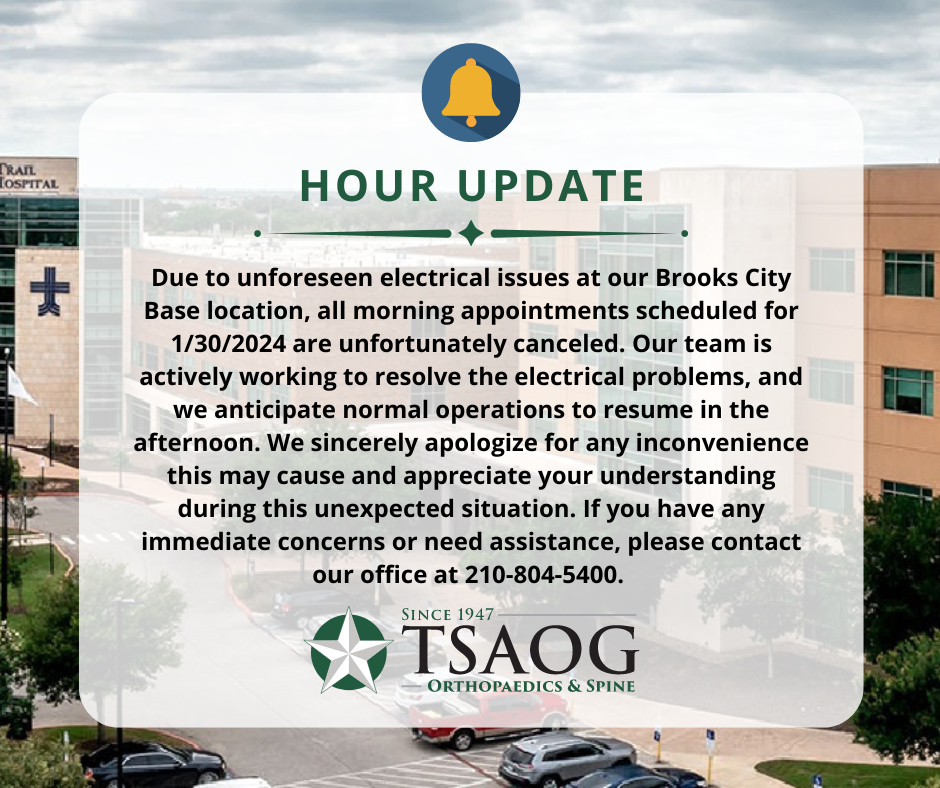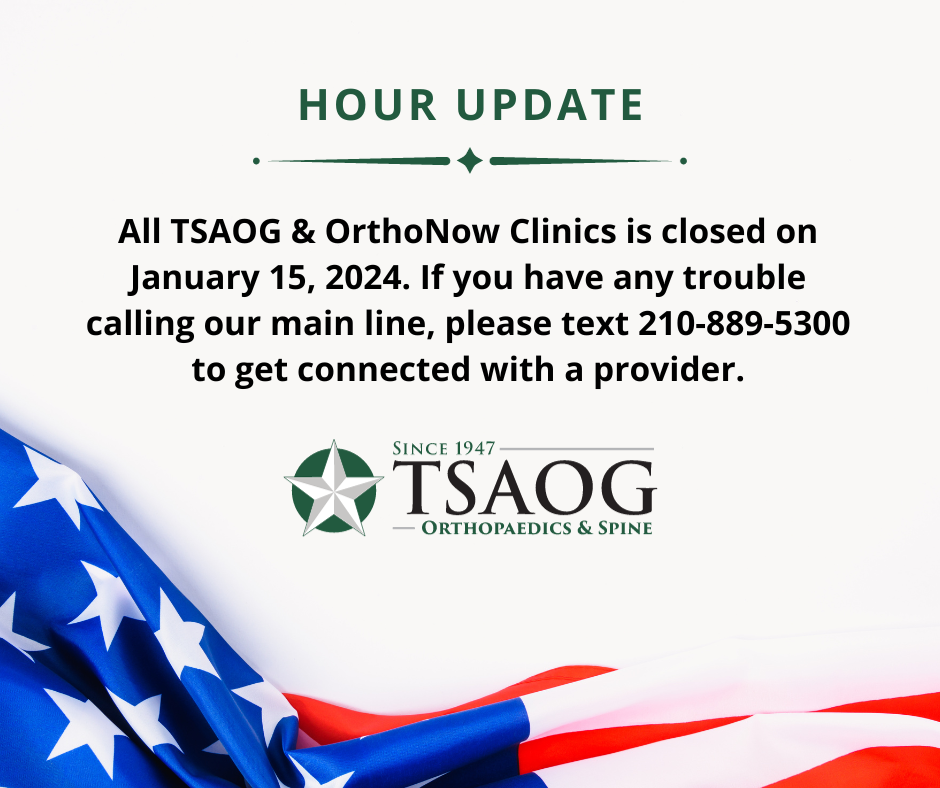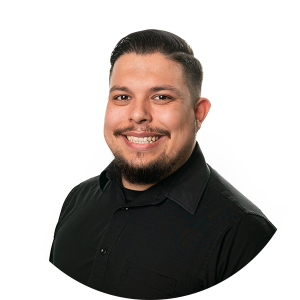
TSAOG Orthopaedics & SPINE
Experience. INNOVATION. EXPERTISE.

Experience. INNOVATION. EXPERTISE.
TSAOG Orthopaedics & SPINE

Experience. INNOVATION. EXPERTISE.
TSAOG Orthopaedics & SPINE

Experience. INNOVATION. EXPERTISE.
TSAOG Orthopaedics & SPINE
TSAOG Orthopaedics & SPINE
Experience. INNOVATION. EXPERTISE.
Replace and restart.
Our joint specialists are dedicated to reducing your pain and restoring mobility to your joints.
Get back in the game.
We are trained in comprehensive treatment and rehabilitation of sports-related injuries.
We've got your back.
Our spine specialists help identify the cause of your neck/back issues and develop a custom care plan.
You’re in the right hands.
We are dedicated to restoring your hand, wrist, elbow, or shoulder function.
Move with confidence.
Our shoulder & elbow specialists are fellowship-trained to treating complex conditions.
We can keep you moving.
The foot & ankle specialists here strive to deliver quality foot and ankle care to all patients.
Reclaim your life.
Our fellowship-trained pain management specialists carefully determine non-surgical options to relieve your pain and elevate quality of life safely and effectively.
Start off on the right foot.
The podiatrists at TSAOG Orthopaedics & Spine help prevent, diagnose, and treat a wide variety of foot conditions.
Need a tune up?
We help restore the function of your back and spine through non-surgical treatment.
Book an Appointment
Online Patient Reviews
FIND A LOCATION

Mission Trail Medical Plaza
3327 Research Plaza, #215
San Antonio, TX 78235

Christus Santa Rosa NW, Tower I
2829 Babcock Rd., #700
San Antonio, TX 78229

Ridgewood Orthopaedic Center
19138 US-281 N
San Antonio, TX 78258
PHYSICIANS: Richard L. Ursone, M.D. , Scott R. Seidel, D.C. , B. Christian Balldin, M.D. , Joseph Poku, M.D. , Casey D. Taber, M.D. , Linzy Fitzsimons, M.D. , Michaelia Sunderland, M.D. , Jeffrey B. Shroff, M.D. , M. Brandon Dobson, M.D. , Dustin B. Rinehart, M.D. , Matthew C. Swann, M.D. , Justin Robbins, M.D. , Lauren E. Karbach, M.D. , Jessica F. Rutstein, D.P.M. , Robert U. Hartzler, M.D., M.S. , Jonathan S. Duncan, M.D. , David E. Vizurraga, M.D. , Taneka M. Stewart, DNP, FNP-BC , Randall C. Marx, M.D. , Ephraim K. Brenman, D.O., R.M.S.K. , Frank J. Garcia, M.D. , Sergio Viroslav, M.D. , Eloy Ochoa, Jr., M.D. , Alexander S. Rowland, M.D. , Ronald W. Connor, M.D. , Bryan W. Kaiser, M.D. , David R. Espinoza, M.D. , David T. Hughes, D.P.M. , S. Josh Bell, M.D. , G. Lane Naugher, M.D. , Stephen C. Drukker, M.D.

Westover Hills Medical Plaza I
11212 State Hwy 151, #150
San Antonio, TX 78251
PHYSICIANS: Eloy Ochoa, Jr., M.D. , Anthony Montanez, M.D. , G. Lane Naugher, M.D. , Christian A. Woodbury, M.D. , Casey D. Taber, M.D. , Nicholas Nira, D.C. , Jonathan S. Duncan, M.D. , Shane C. Eizember, M.D. , Kevin L. Kirk, D.O., F.A.O.A. , S. Josh Bell, M.D. , Emmanuel C. Nwelue, Jr., M.D. , Stephen T. Gates, M.D.

The Orthopaedic Institute
400 Concord Plaza Dr.
San Antonio, TX 78216
PHYSICIANS: Ronald W. Connor, M.D. , Casey D. Taber, M.D. , Ephraim K. Brenman, D.O., R.M.S.K. , Eloy Ochoa, Jr., M.D. , David E. Vizurraga, M.D. , Justin Robbins, M.D. , Shane C. Eizember, M.D. , Stephen T. Gates, M.D. , Eduardo Moreno, M.D. , Randall C. Marx, M.D. , David R. Espinoza, M.D. , Alexander S. Rowland, M.D. , Charles E. Bryant, M.D. , Lauren E. Karbach, M.D. , Anthony Montanez, M.D. , S. Josh Bell, M.D. , Frank J. Garcia, M.D. , G. Lane Naugher, M.D. , Matthew C. Swann, M.D. , B. Christian Balldin, M.D. , Christian A. Woodbury, M.D.

Resolute Retail Plaza
601 Creekside Crossing #106
New Braunfels, TX 78130

Schertz Parkway Professional Plaza
5000 Schertz Parkway, #600
Schertz, TX 78154

Grayson Heights
1422 East Grayson Street, Ste 102
San Antonio, TX 78208
OrthoConnect Telemedicine
Visit with your doctor and get the answers you need from the safety of your own home!










